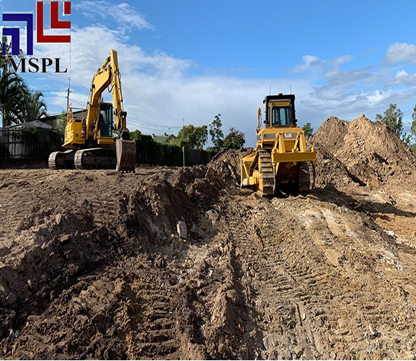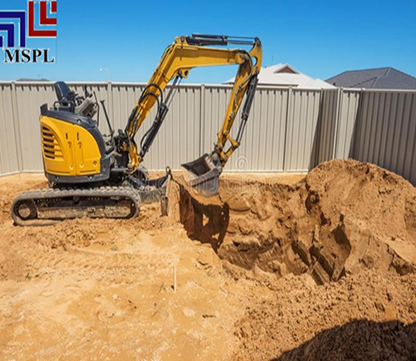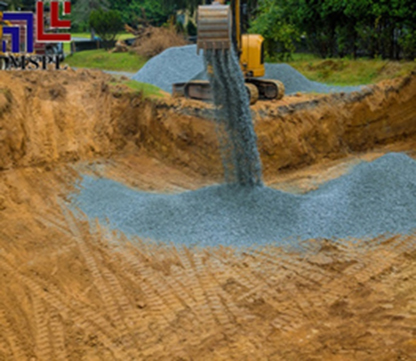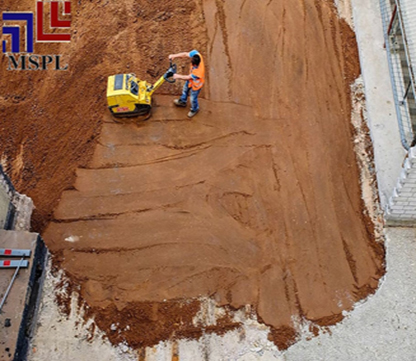- info@maxsolution.in
- +91 120-4333393, +91-9871024777
Excavation
EXCAVATION PLAN & BACK FILLING WORK
MSPL can handle every step in your excavation process. Our locally-owned heavy civil contracting company has experience in all aspects of excavation construction, including mass excavation, earthwork construction, structural and specialty excavation, and other related construction projects Our commitments to quality work, safety and strong relationships with our clients have made us a leader in the industry in terms of excavation and other construction services.

WHAT IS EXCAVATION CONSTRUCTION?
Excavation construction is the process of moving earth, rock, or other materials using expert tools, technology, equipment, or explosives. Along with preparing a site for further development, excavation has several important applications, including exploration, environmental restoration, mining, and construction. Among these, construction is the most common application for excavation.
Some of the different processes used in excavation include trenching, digging, dredging, and site development. Each of these processes requires unique techniques, tools, and machinery to get the job done right. The processes used will depend upon the structure that will result from the construction process.
Our excavating team can perform all the services your excavation project requires at competitive rates. With our team by your side, you can rest easy knowing that all steps in the construction project are taken care of, including reclamation, demolition, grading, or trenching. Request a bid to fully discover how MSPL will meet and exceed the goals of your next excavating project.
Excavation and Backfilling of Soil – Work Sequence and Procedure
Work procedure for excavation at construction site involves understanding of center line and excavation drawings, setting out of plan on ground, excavation of soil and removal of excess soil. Quality checks such as recording ground level and marking of reference points should be done. Excavation is the process of moving earth, rock or other materials with tools, equipment or explosives. It also includes trenching, wall shafts, tunnelling and underground. It is the preliminary activity of the construction project.
The following are the equipment’s used for the earthwork for foundation:
- Hydraulic excavator
- Tractor / trucks
- Spade
- Kassi
- Pickaxe
- Crowbar
- Rammer
- Wedge
- Boning Rod
- Sledge Hammer
- Basket
- Iron Pan
- Line and Pins
- hydraulic compactor

Scope of Work for Excavation and Backfilling of Soil:
- Setting out of corner benchmarks.
- Survey for ground levels.
- Survey for top levels
- Excavation to approved depth.
- Dressing of loose soil.
- Making up to cut off level
- Constructing dewatering wells and interconnecting trenches.
- Marking boundaries of the building.
- Constructing protection bunds and drains

Working Procedure for Soil Excavation:
Setting out or ground tracing is the process of laying down the excavation lines and center lines etc. on the ground before the excavation is started. The centerline of the longest outer wall of the building is marked on the ground by stretching a string between wooden or mild steel pegs. Each peg may be projected about 25 to 50 mm from the ground level and 2m from the edge of the excavation. The boundary is marked with the lime powder. The center lines of other walls are marked perpendicular to the longer walls. A right angle can be formed by forming 3, 4 and 5 triangles. Similarly, outer lines of the foundation trench of each cross wall and are set out.

Backfilling and Removal of Excess Soil
Estimate the excavated stuff to be re-utilized in filling, gardening, preparing roads, etc. As far as possible try to carry excavation and filling simultaneously to avoid double handling. Select and stack the required material in such a place that it should not obstruct other construction activities.
Quality Checks for Excavation & Backfilling
- Recording initial ground level and check size of bottom.
- Disposal of unsuitable material for filling.
- Stacking suitable material for backfilling to avoid double handling.
- Strata classification approval by competent authority.
- Dressing bottom and sides of pits as per drawing with respect to centerline.
- Necessary safety measures observed.
- Sample is approved for back filling.
- Necessary marking/ reference points are established for final level of backfilling.
- Back filling is being carried out in layers (15cm to 20cm).
- Required watering, compaction is done.
- Required density is achieved.
